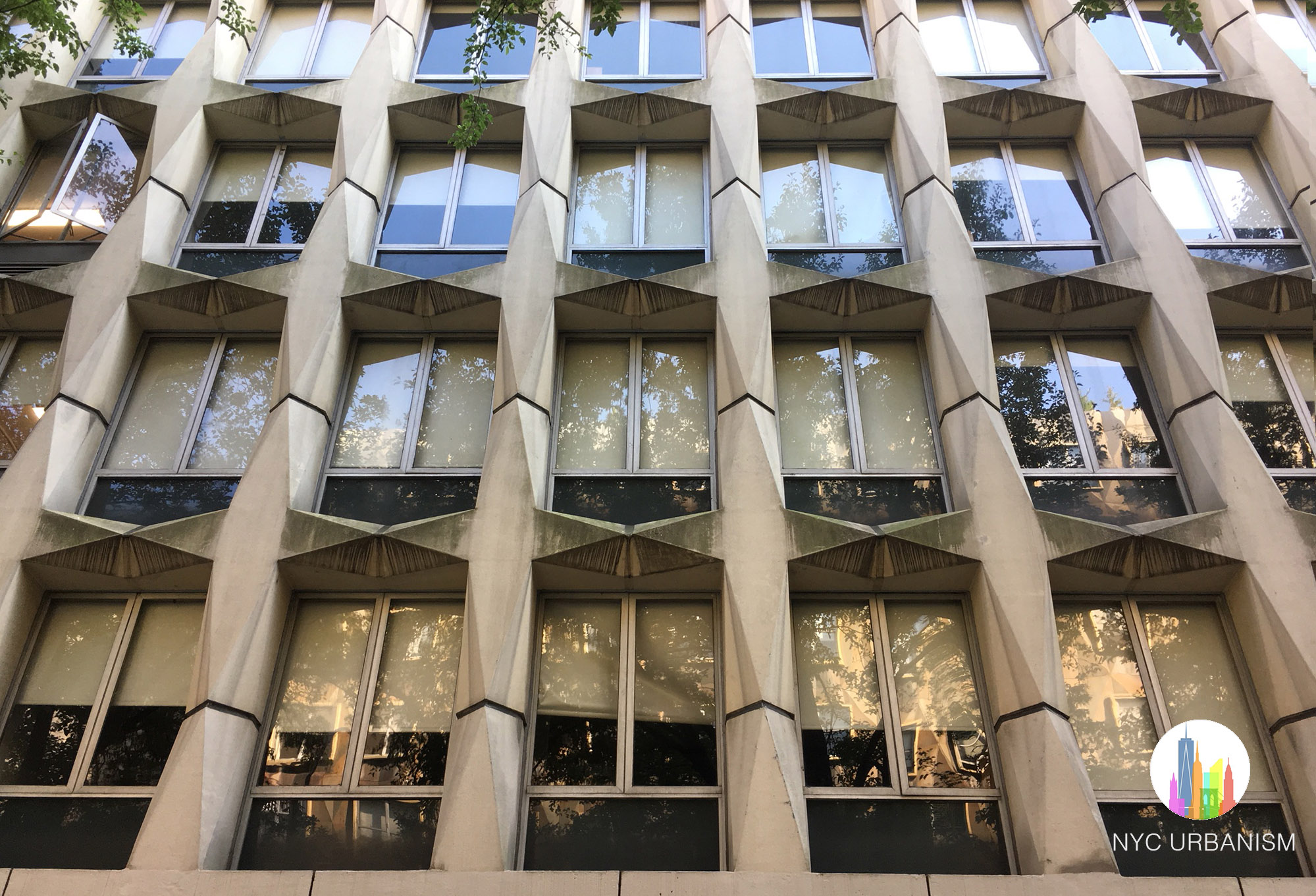FASHION INSTITUTE OF TECHNOLOGY
Credit: NYC Urbanism, 2017. Cover photo credit: Alex James Bruce, 2017.
NAGLER HALL
DATE: 1960
ARCHITECT: DE YOUNG, MOSCOWITZ & ROSENBERG
ADDRESS: 220 West 27th Street
Use: Academic
Marvin Feldman Center, 1967.
The Fashion Institute of Technology, commonly referred to as FIT, was established in 1944 as a college for design, art, communication, and technology. In 1956 the school was accredited as a two-year community college by the state and filed plans for their first campus building. The plans called for a $7.7 million structure on a midblock site on the north side of 27th street. Designed by the firm De Young, Moscowitz & Rosenberg, Building C, now known as the Marvin Feldman Center, is a nine-story aluminum paneled structure with a recessed arcade and arc-shaped entranceway. The aluminum curtainwall was meant to be two shades of blue, but when the building was completed in 1959 the panels resembled a dirty bronze color.
Nagler Hall, 1964. Credit: Museum of the City of New York.
A year after Building C opened De Young, Moscowitz & Rosenberg designed Nagler Hall, a 10-story dormitoy clad in a faceted grid of precast concrete with deep set windows. Nagler Hall was and still is the most interesting building on the FIT campus, and signaled the start of the firm’s use of concrete, which would not be as successful in the following decade.
In 1964, the school announced plans to expand and build a more traditional structure. The ten year $36 million expansion program was sponsored by the New York City Board of Education and the Educational Foundation for the Apparel Industry, and added much needed facilities, a design laboratory, library, student center, classrooms, and dormitory – to support plans to expand enrollment from 1,350 to 3,500 by 1970. The school proceeded to acquire property on the two blocks from 26th to 28th Street and from Seventh to Eighth Avenue where Nagler Hall and Building C were already located.
THE FRED P. POMERANTZ ART & DESIGN CENTER & THE SHIRLEY GOODMAN RESOURCE CENTER
DAVID DUBINSKY STUDENT CENTER
Date: 1977
Architect: De Young, Moscowitz & Rosenberg
Address: 200 & 227 West 27th Street
Use: Education
In 1967 FIT hired De Young & Moscowitz to design the buildings that would anchor the new campus, a design Paul Goldberger described as “a tailored version of Corbusier-inspired brutalism.” The result was a monolith spanning 26th, 27th and 28th streets on Seventh Avenue, bridging over 27th Street, which would remain open to traffic. The two connected limestone monoliths on Seventh Avenue, the six-story arts building on the southeast corner and the Shirley Goodman Resource Center on the northeast corner were completed in 1977.
The buildings were a shift in style from their two predecessors, unadorned marble forming a massive two-block long limestone wall on Seventh Avenue. The top three floors were predominantly windowless and jutted out over the sidewalk, with a small arcade on either side of the 27th street entranceway below the top four floors that spanned the street. The building's design was monotonous but succeeded in anchoring the campus, providing a notable gateway to the block-long campus. Although 27th street was not completely pedestrianized, it was closed to through traffic during the day, providing more of a campus feel despite being in the middle of a dense metropolis. The buildings were not well received, but did succeed in giving the school a presence in the neighborhood, more so than if they had continued constructing smaller buildings of differing styles along the block.
The only other FIT building to match another stylistically was the David Dubinsky Student Center, also designed by De Young’s firm and completed the same year as the Seventh Avenue buildings. Located on the north-west corner of the campus on 8th Avenue between 27th and 28th Streets the Dubinsky Center shared the same limestone facade yet had even fewer windows and no arcade. With the intention to make 27th Street the center of the campus, the back of the building faced 8th avenue, interrupting the largely commercial corridor.
During the expansion, the firm also designed Co-Ed Hall at 230 West 27th Street, just west of Nagler Hall, which opened in 1974. Co-Ed Hall had a Rudolphian-style striated concrete facade, a contrast to its neighbor to the east or the sleek limestone buildings that were being constructed at the same time. Christopher Gray described the building’s facade as “bare, [and] rather hostile,” explaining the change in style because of the departure of Youssef S. Bahri from the firm who was a lead designer for the limestone projects on the east and west ends of the campus. Co-Ed Hall was set back from the sidewalk by a privately owned public space (POPS) with benches and a row of trees. In his survey of POPS, Jerold S. Kayden notes the size of the space exceeded the minimal requirements for an “as-of-right” plaza.
Left: Dubinsky Student Center. Credit: NYC Urbanism, 2017. Right: Co Ed Hall. Credit: StreetEasy.
Over the next decade, the school was unable to buy out the entire block; instead, renting space in neighboring buildings such as 236 West 27th, on the south-west end of the block. They did build one more residence hall, this time choosing a different architect, Henry George Greene, at 210 West 27th Street. Greene’s plain beige brick tower strayed from the concrete, limestone and aluminum structures of De Young & Moscowitz. In the following decade, two more infill masonry structures were constructed by Kevin Hom + Andrew Goldman Architects. While the architects likely intended to deviate from De Young & Moscowitz who had already grappled with a common design theme, the new tower further solidified the campus as a hodgepodge of mid-century modernist architectural styles that to this day fail to provide the school a with a singular identity.
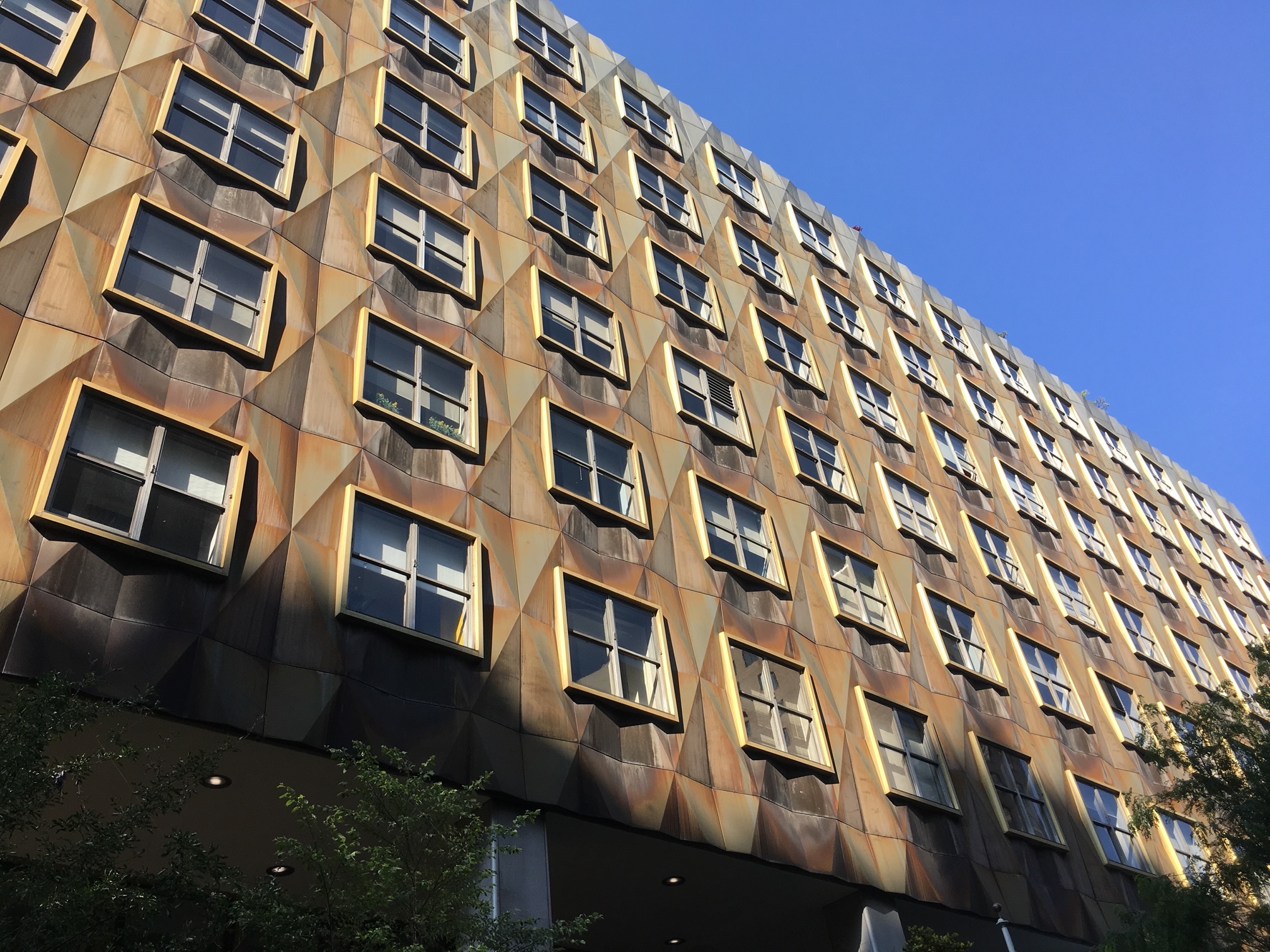
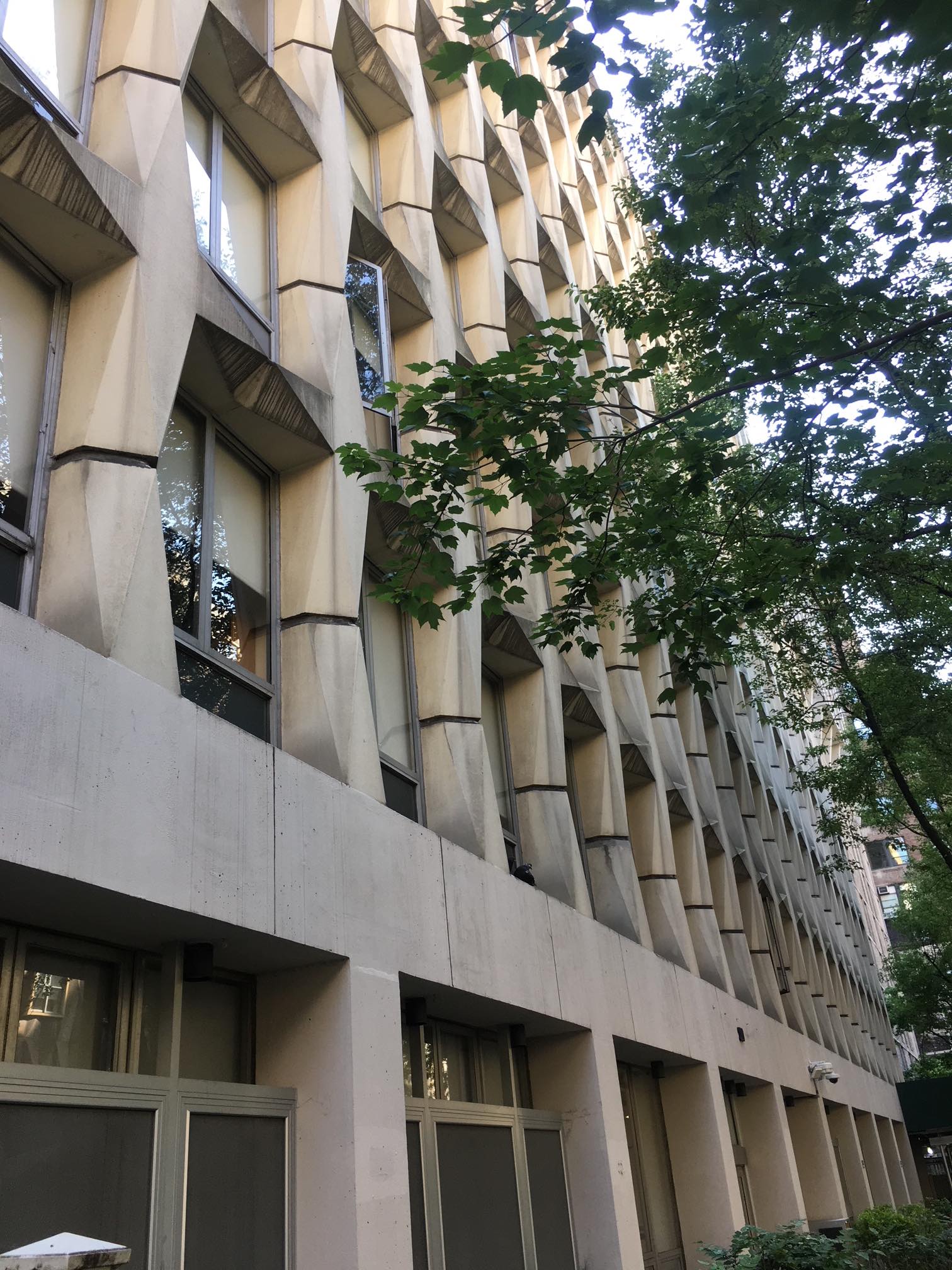



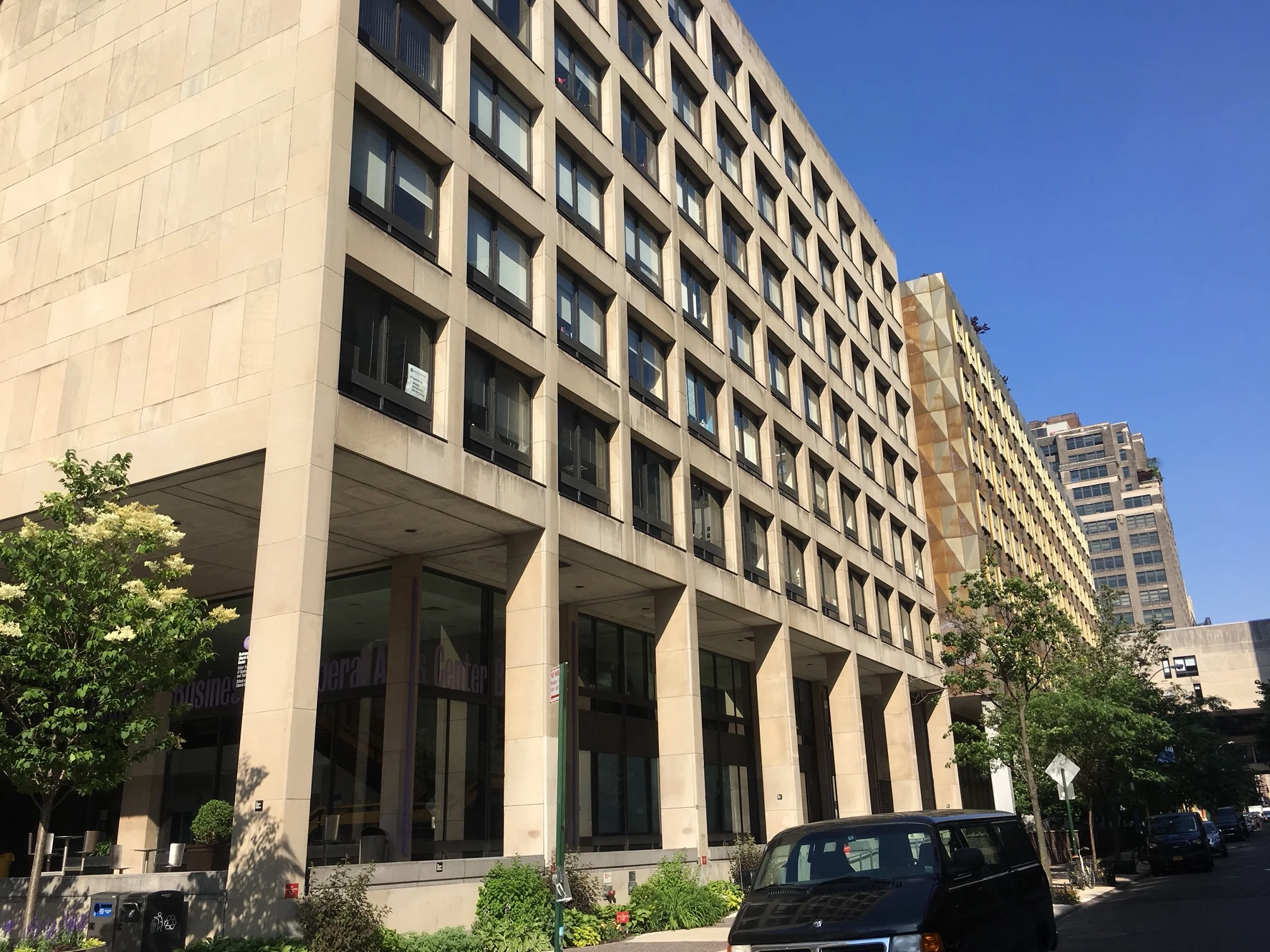
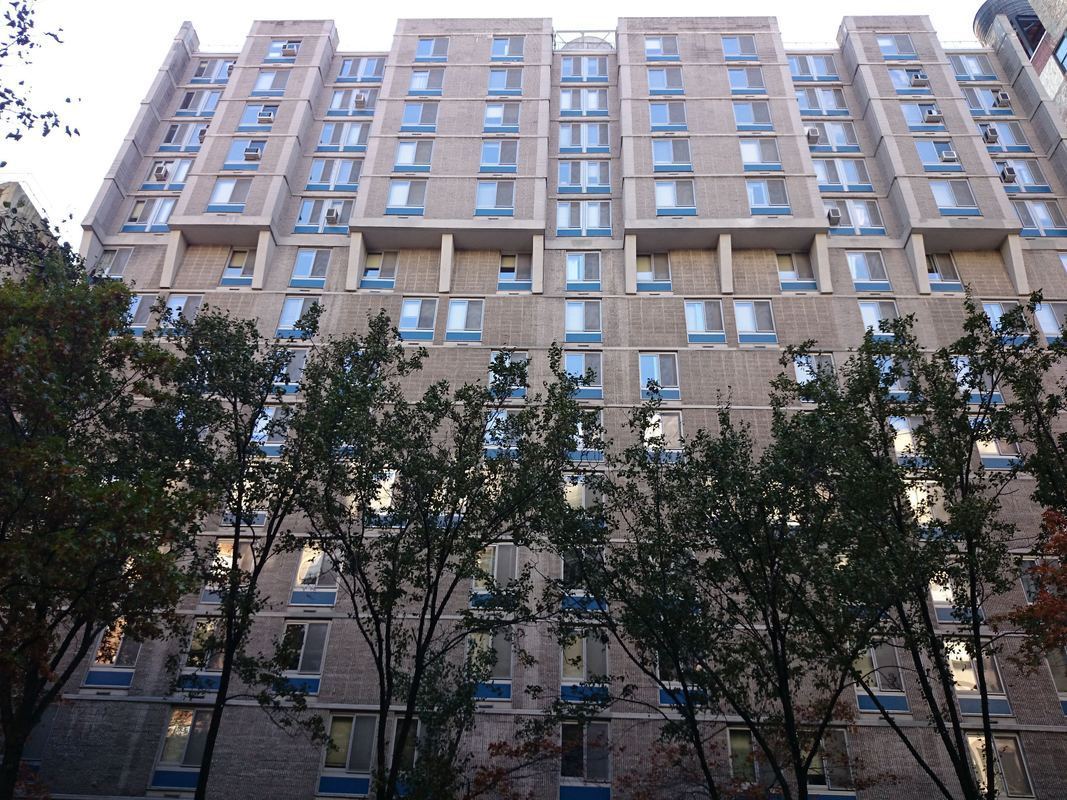
Sources:
Gray, Christopher. A Smorgasbord Of Architectural Diversity. The New York Times, June 26, 2005.
Kayden, Jerold S; The New York City Department of City Planning; the Municipal Art Society of New York. Privately Owned Public Space: The New York City Experience. John Wiley & Sons, 2000.

